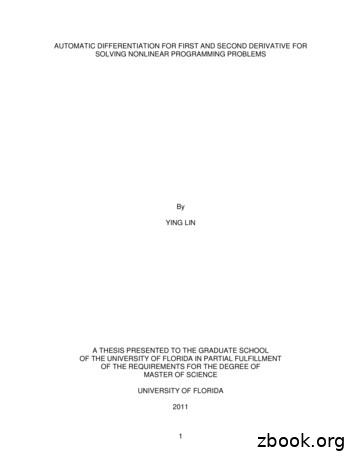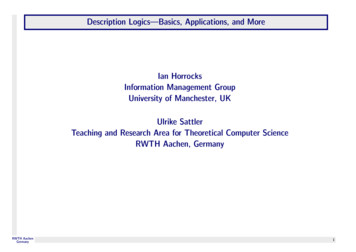Numerical Differentiation And Integration
Next: Ordinary Differential Equations Up: Numerical Analysis for Chemical Previous: Curve FittingSubsectionszNewton-Cotes Integration of Equations{ The Trapezoidal rule{ Simpson's rulezIntergrations of Equations{ Romberg integration{ Gauss Quadrature{ Improper integralszNumerical Differentiation{ High-accuracy differentiation formulas{ Richardson extrapolation{ Derivatives of unequally spaced data{ Numerical integration/differentiation formulas with libraties and packageszEngineering Applications: Numerical Integration and DifferentiationNumerical Differentiation and IntegrationThe derivative represents the rate of cchange of a dependent variable with respect to an independent variable.(6.1)The integration means the total value, or summation, ofover the rangeto.(6.2)Newton-Cotes Integration of EquationsNewton-Gregory forward polynomial : If theuseful; the differences in-values are evenly spaced, instead of using divided difference, ordinary differences'' are more-values are not divided by the differences in-values.(6.3)where, with, the uniform spacing in-values.The Newton-Cotes formulas are based on the strategy of replacing a complicated function or tabulated data with an approximating functionthat is easy to integrate:
(6.4)whereis the Newton-Gregory interpolating polynomial. For(6.5)For(6.6)See the figure 21.1 in the textbook.The Trapezoidal ruleThe trapezoidal rule is the first of the Newton-Cotes closed integration formulas(6.7)where(6.8)The result of integration is(6.9)which is called as trapezoidal rule.One way to improve the accuracy of the trapezoidal rule is to divide the integration interval fromapply the method to each segment. The width of segmentstointo a number of segments and(6.10)
The integration is(6.11)Simpson's ruleAnother way to obtain a more accurate estimate of an integral is to use higher-order polynomial to connect the points.Simpson's 1/3 rule : use a second-order polynomial(6.12)Simpson's 1/3 rule is(6.13)The label 1/3'' stems from the fact thatis divided by 3.Simpson's 3/8 rule : use a third-order Lagrange polynomial(6.14)Simpson's 3/8 rule is(6.15)See the figure 21.11 in the textbook.Intergrations of EquationsRomberg integrationRichardson's extrapolation : use two estimates of an integral to compute a third. It improves the results of numerical integration on the basis ofthe integral estimate themselves.Two separate estimate using step sizes ofand
(6.16)The error of the multiple-application trapezoidal rule is(6.17)Assume thatis constant regardless of step size(6.18)Rearranage the above equation(6.19)which can be substituted into eq. (6.16)(6.20)which can be solved for(6.21)Thus, we have developed an estimate of the truncation error in terms of the integral estimates and their step sizes. This estimate can then besubstituted into(6.22)to yield an improved estimate of the integral:(6.23)For the special case where the interval is halved(6.24)
or(6.25)The Romberg integration algorithm(6.26)whereandare the more and less accurate integral andis the improved integral.Gauss QuadraturezTrapezoidal rule : two parameters modelzwhere the 's are the unknown parameters.Gauss Quadrature : four parameters modelwhere the's,,are the unknown parameters.The trapezoidal rule's formula can be derived from another point of view, the method of undetermined coefficients. Because the trapezoidalrule is a two parameters model, we need two relationships that connect two parameters.(6.29)and(6.30)(6.31)The trapezoidal rule must pass through the end point and results in a large error. But suppose that the constraints of fixed base points wasremoved and we were freely evaluate the area under a straight line joining any two points on the curve. See the figure 22.5 to figure out thedifferences.The object of Gauss quadrature is to determine the coefficients of an equation of the form
(6.32)with assuming that eq. (6.32) fit the integral of a constant, a linear, a parabolic, and a cubic function(6.33)(6.34)(6.35)(6.36)These relationships yield the two-point Gauss-Legendre formula(6.37)Because Gauss quadrature requires function evalutions at nonuniformly spaced points within the integration interval, it is not appropriate forcases where the function is unknown.Improper integralsImproper intergral that is one with a lower limit ofor an upper limit of, usually can be evaluated by makeing a change ofvariable that transforms the infinite range to one that is finite.Numerical DifferentiationImprove derivative estimateszzzDecrease the step sizeUse a higher-order formulaCombine two derivative estimates to compute more accurate approximationHigh-accuracy differentiation formulasThe forward Taylor series expansion can be written as(6.38)which can be solved for(6.39)
If we truncate the second- and higher-derivative terms(6.40)The accuracy of the above equation depend on the step size.In contrast to this approach, substitue the second-derivative term(6.41)into eq. (6.39) to yield(6.42)or, by collecting terms,(6.43)Notice that inclusion of the second-derivative term has improved the accuracy to.Richardson extrapolationIn similar with Richardson extrapolation for integral, an estimate for derivatives can be written as(6.44)For centered difference approximations with, the application of this formula will yield a new derivative estimate of.Derivatives of unequally spaced dataOne way to handle nonequispaceddata is to fit a second-order Lagrange interpolating polynomial to each set of three adjacent points.Numerical integration/differentiation formulas with libraties andpackagesVarious subroutines and functions are exist to solve integral and derivative problems in Matlab and IMSL.
Engineering Applications: Numerical Integrationand DifferentiationNext: Ordinary Differential Equations Up: Numerical Analysis for Chemical Previous: Curve FittingTaechul Lee2001-11-29
These relationships yield the two-point Gauss-Legendre formula Because Gauss quadrature requires function evalutions at nonuniformly spaced points within the integration interval, it is not appropriate for . variable that transforms the infinite range to one that is finite. Numerical Differentiation Improve derivative estimates zDecrease the .
Automatic Differentiation Introductions Automatic Differentiation What is Automatic Differentiation? Algorithmic, or automatic, differentiation (AD) is concerned with the accurate and efficient evaluation of derivatives for functions defined by computer programs. No truncation errors are incurred, and the resulting numerical derivative
Introduction to Numerical Differentiation Approximating a Derivative (Cont’d) To approximate f′(x0), suppose first that x0 (a,b), where f C2[a,b], and that x1 x0 h for some h 6 0 that is sufficiently small to ensure that x1 [a,b]. Numerical Analysis (Chapter 4) Numerical Diff
theory of four aspects: differentiation, functionalization, added value, and empathy. The purpose of differentiation is a strategy to distinguish oneself from competitors through technology or services, etc. It is mainly divided into three aspects: market differentiation, product differentiation and image differentiation.
Categories and Subject Descriptors: G.1.4 [Numerical Analysis]: Automatic Differentiation General Terms: Automatic Differentiation, Numerical Methods, MATLAB Additional Key Words and Phrases: algorithmic differentiation, scientific computation, applied mathemat-ics, chain rule, forward mode, overloading, source transformation ACM Reference Format:
MATLAB has many tools that make this package well suited for numerical computations. This tutorial deals with the rootfinding, interpolation, numerical differentiation and integration and numerical solutions of the ordinary differential equations. Numerical methods
simplifies automatic differentiation. There are other automatic differentiation tools, such as ADMAT. In 1998, Arun Verma introduced an automatic differentiation tool, which can compute the derivative accurately and fast [12]. This tool used object oriented MATLAB
UbD. DI HIDOE - Differentiation, 2003 Differentiation Overview How monotonous the sounds of the forest would be if . Lesson plans HIDOE - Differentiation, 2003 Differentiation Overview. readiness Interests and/or learning style(s) or preferences. 9. Let's look at a few lessons.
Description Logic RWTH Aachen Germany 4. Introduction to DL I A Description Logic - mainly characterised by a set of constructors that allow to build complex concepts and roles from atomic ones, concepts correspond to classes / are interpreted as sets of objects, roles correspond to relations / are interpreted as binary relations on objects, Example: Happy Father in the DL ALC Manu (9has-child .























